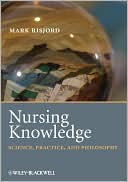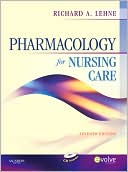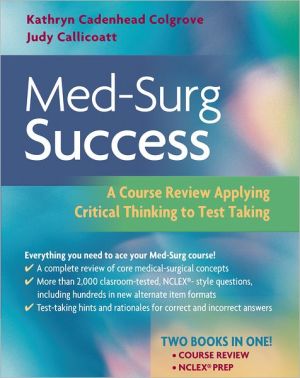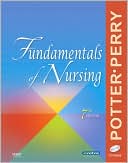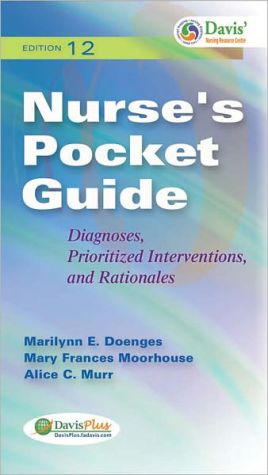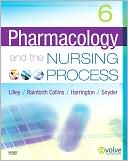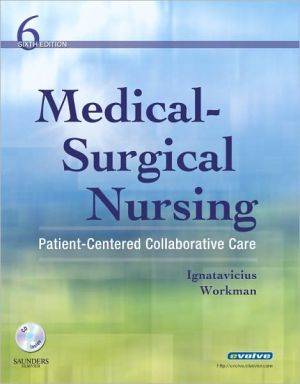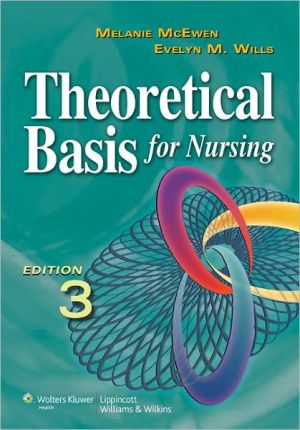Nursing Knowledge: Science, Practice, and Philosophy
Search in google:
Nurses who conduct research have a longstanding interest in questions of nursing knowledge. Nursing Knowledge is a clear and well-informed exposition of the philosophical background to nursing theory and research. Nursing Knowledge answers such fundamental questions as: How is nursing theory related to nursing practice? What are the core elements of nursing knowledge? What makes nursing research distinctive as nursing research? It examines the history of the philosophical debates within nursing, critiques the arguments, explains the implications and sets out to rethink the philosophical foundation of nursing science.Nursing Knowledge begins with philosophical problems that arise within nursing science. It argues that nurses ought to adopt certain philosophical positions because they are the best solutions to the problems that nurses encounter. The book claims that the nursing standpoint has the potential to disclose a more complete understanding of human health than the common disease-and-dysfunction views. Because of the relationship to practice, nursing science may freely draw theory from other disciplines and nursing practice unifies nursing research. With a new philosophical perspective on nursing science, the so-called relevance gap between nursing theory and practice can be closed.The final chapter of the book ‘redraws the map’, to create a new picture of nursing science based on the following principles:problems of practice should guide nursing researchpractice and theory are dynamically relatedresearch must provide the knowledge base necessary for nurse interventions, training, patient education, etc.nursing theory is strengthened when it is integrated with other disciplines Key featuresClear and accessibly writtenAccurate and philosophically well-informed,Discusses philosophical problems in contexts familiar to nurses Systematically examines the philosophical issues involved in nursing researchExamines epistemology (how we know what we know), theory development, and the philosophical foundations of scientific methodology. Develops a new model of nursing knowledge ALSO OF INTERESTPractice Development in NursingBrendan McCormack, Kim Manley & Robert Garbett978-1-4051-1038-9International Practice Development in Nursing and HealthcareKim Manley, Brendan McCormack & Valerie Wilson978-1-4051-5676-9Vital Notes for Nurses: Nursing Models, Theories and PracticeHugh McKenna & Oliver Slevin978-1-4051-3702-7
Preface Foreword. PART I NURSING KNOWLEDGE AND THE CHALLENGE OF RELEVANCE. Introduction to Part I. Nursing knowledge. Two kinds of theory–practice gap. Philosophy of nursing science. 1 Prehistory of the problem. The domain of nursing. Professionalization and the translation gap. Nursing education reform in the United States. Nursing research begins. A philosophy of nursing. What would a nursing science look like? Nursing theory and nursing knowledge. Borrowed theory. Uniqueness. Conclusion: the relevance gap appears. 2 Opening the relevance gap. Two conceptions of nursing science. The demise of practice theory. The argument from value freedom. The argument from theory structure. The consensus emerges. Carper’s patterns of knowledge. Donaldson and Crowley on the discipline. Fawcett on the levels of theory. The relevance gap. The qualitative research movement. The middle-range theory movement. Conclusion: the relevance gap endures. 3 Toward a philosophy of nursing science. Philosophical questions about nursing. Questions about the discipline. Questions of philosophy. Science, value, and the nursing standpoint. Qualitative research and value-freedom. Standpoint epistemology. Theory, science, and nursing knowledge. The received view of theory. Explanatory coherence and inter-level models. Consequences for nursing knowledge. Conclusion: closing the gap. PART II VALUES AND THE NURSING STANDPOINT. Introduction to Part II. 4 Practice values and the disciplinary knowledge base. Dickoff and James’ practice theory. Values and theory testing. Challenges to Dickoff and James’ criteria. Beckstrand’s critique. Fact and value. Intrinsic and instrumental values. Carper’s fact–value distinction. Problems with patterns. The disintegration of nursing knowledge. The obfuscation of evaluative commitments. The role of theory in ethical knowledge. Sociopolitical knowing. Conclusion: fact and value in nursing knowledge. 5 Models of value-laden science. The Johnson model: nursing values as guides for theory. Constitutive and contextual values. Constitutive values in science: Kuhn’s argument. Epistemic and moral/political values. Models of value-laden inquiry. Value-laden concepts in nursing inquiry. Conclusion: constitutive moral and political values in nursing inquiry. 6 Standpoint epistemology and nursing knowledge. Social role and epistemic privilege. Feminist appropriation of standpoint epistemology. Generalizing standpoints. Knowledge and the division of labor in health care. Nursing knowledge and nursing roles. Conclusion: nursing knowledge as an epistemic standpoint. 7 The nursing standpoint. Top-down and bottom-up views of nursing. Values in the nursing standpoint. The philosophical questions revisited. Questions and concerns. What is the nursing role? How are the boundaries of the profession determined? Qualitative or quantitative? Is nursing an applied science? Conclusion: science and standpoint. PART III NURSING THEORY AND THE PHILOSOPHY OF SCIENCE. Introduction to Part III. 8 Logical positivism and mid-century philosophy of science. Some history and terminology. Empiricism. Logical positivism. Conceptions of theory in nursing. Theories and axiom systems. Euclid and Newton. Challenges to an axiomatic treatment of theory. Implicit definition. Theory structure: the received view. Theoretical and experimental laws. The hierarchy of theory. Explanation and confirmation. Explanation. Theory testing. Conclusion: logical positivism and scientific knowledge. 9 Echoesinnursing. Did logical positivism influence nursing? Three kinds of influence. Positivism and the critique of nursing metatheory. The metaparadigm of nursing. Validity of the metaparadigm. What is a “metaparadigm”? Levels of theory 100. How the levels are distinguished. How the levels are related. Why the levels are supposed to be necessary. Borrowed theory. Conclusion: the relevance gap and the philosophy of science. 10 Rejecting the received view. Holistic confirmation. The necessity of auxiliary hypotheses. Auxiliary hypotheses and borrowed theory. Consequences for nursing. Failure of the theory–observation distinction. The vagueness of the distinction. The role of training. Observation and theory testing. Levels of theory and interdisciplinary research. Theory change and level mixing. Theoretical integration. Consequences for nursing. Conclusion: rejecting the received view of nursing science. PART IV THE IDEA OF A NURSING SCIENCE. Introduction to Part IV. 11 Postnursing theory inquiry. Passion for substance. Situation-specific theories. Postnursing theory inquiry. Research example: mastectomy. Background. Patient responses to radical mastectomy. Background. Sensory and distress components of pain. Breakthrough research and situation-specific theory. Conclusion: revisioning nursing theory. 12 The structure of theory. Questions and answers. Coherence and confirmation. Horizontal and vertical questions. Breakthrough research revisited. Radical mastectomy. Pain research. Borrowed theory. Research example: pain intervention. Borrowed theory and the nursing standpoint. Conclusion: piecing the quilt. 13 Models, mechanisms, and middle-range theory. What is middle-range theory? An old, new definition of middle-range theory. The semantic conception and the received view. Middle-range theories as theoretical models. Physical and nonphysical theoretical models. The challenge of precision in nursing models. Interlevel models in nursing science. Theoretical models and explanatory coherence. Holism, reductionism, and the nursing standpoint. The holistic patient care argument. The inconsistency argument. The causation and control argument. Causality, holism, and professional values. Conclusion: causal models and nursing science. PART V CONCEPTS AND THEORIES. Introduction to Part V. 14 Consequences of contextualism. Concepts: theory-formed or theory-forming? Public and personal concepts. The priority of theory. Linguistic arguments for contextualism. Scientific and colloquial contexts. Contextualism and realism. Moderate realism. Contextualism and antirealism. Realism and representation. Concept analysis and borrowed theory. Conclusion: philosophical foundations of multifaceted concepts. Theory development and multifaceted concepts. Concepts, borrowed theory, and interlevel models. 15 Conceptual models and the fate of grand theory. Models and theories. The orientation and abstraction pictures. Arguments against the abstraction picture. Harmful effects of the abstraction picture. Advantages of the orientation picture. Rereading the early theorists. Nursing pedagogy and early theory. Conceptualizing the nurses’ role. Models of nursing and models for nursing. Conceptual models as nursing philosophy. Philosophical criticism of conceptual models. Conclusion: science, practice, and philosophy. PART VI PARADIGM, THEORY, AND METHOD. Introduction to Part VI. Terminological preliminaries. 16 The rise of qualitative research. Making space for qualitative methodology: Carper, Benner, and Watson. The triangulation problem. Triangulation and confirmation. Objections to triangulation. Two paradigms of nursing inquiry. Conclusion: method, theory, and paradigm. 17 What is a paradigm? Components of a paradigm. Theory and ontology. Theory and method. Values. Incommensurability. Pulling paradigms apart. Theory and method (reprise). Theory and ontology (reprise). Against paradigms. Conclusion: nursing science without paradigms. 18 Methodological separatism and reconciliation. Reality and realities. Idealism. Meaning and reality. Static and dynamic. Objective and subjective. Deduction and induction. Reductionism and value-freedom. The unity of nursing knowledge. Reconciling qualitative and quantitative research. Methods as bridges. The objective support. The query support. Method in the middle. Conclusion: local methodological decision-making. PART VII CONCLUSION. 19 Redrawing the map. Theory. Criteria for theory evaluation. A new perspective on theory. Evaluating theoretical models. Evaluating intervention research. Evaluating interpretations. New questions about nursing theory. Professional values and disciplinary knowledge. Nursing knowledge and the relevance gap. New questions about evidence-based nursing practice. New maps, new directions. References. Index.
